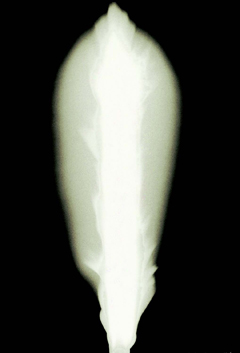Did you know Clark Strand led a Green Meditation online retreat from March 1st through March 22nd, 2010? Take a look here.

At a press conference in April 2009, the White House science czar John Holdren described the impending catastrophe of global warming with an ominous metaphor: “We’re driving in a car with bad brakes in a fog and headed for a cliff. We know for sure that cliff is out there. We just don’t know exactly where it is.” In Holdren’s scenario, the “fog” is our uncertainty about climate change and where we stand in relationship to it— whether it’s here already or still to come. The “cliff” is the tipping point beyond which all efforts to forestall disaster are probably pointless. And the “bad brakes” are inadequate controls and regulations on greenhouse-gas emissions. The “car,” presumably, is us—America, specifically, and humanity in general—about to go over the edge. The only problem with this metaphor is that nowhere does it mention the road.
How is it that we find ourselves on a road leading to a cliff? The only reasonable answer is that we have taken a wrong turn somewhere along the way. The good news is, that would mean that an alternate road exists.
Green Meditation recognizes the existence of another path for humanity on its journey through deep time—a path which connects us not only with our deep past as a species but also with our deep future. Although that path is often hidden by modern life, it can still be found in our Buddhist texts and teachings—as well as in our sleep.
• Begin your Green Meditation retreat a week ahead of time by turning off the lights in your apartment, house, or training center a little earlier each night. The night before you begin your retreat, turn the lights off shortly before dusk. Use the time which becomes available for walking in nature, meditation, or quiet rest.
• During the retreat, keep artificial light to a minimum during the daytime and eliminate it altogether at night. Eat moderately and avoid caffeine or other stimulants. Work or practice outdoors as weather allows, leaving time for physical exercise each day.
• Retire sometime between dusk and dark, before you are physically tired. If you wake during the night, meditate quietly while lying down, or by reciting a mantra or prayer. Weather and safety permitting, you may also meditate simply by stepping outside into the dark.
• As you continue these practices, you may find the darkness “listening” to your meditation. If this happens, speak to it in the way that ancient people might have spoken to nature, to the spirits of their ancestors, or to the Buddha or the gods. Speak to the darkness about whatever is on your mind. If this makes you feel self-conscious, speak to the dark about that. During this time, there is nothing whatsoever that you are forbidden to say or think or feel.
• Make no effort to remain alert or mindful during your nightly meditations, but rather allow for the possibility of drifting in and out of sleep. During the daylight hours, follow the practice model established by your teacher or your tradition, giving it your full attention—understanding all the while that darkness is the natural counterweight of waking human consciousness. Like the Tao, the mind of a buddha is revealed by nature, perfectly realized in the balance of darkness and light.